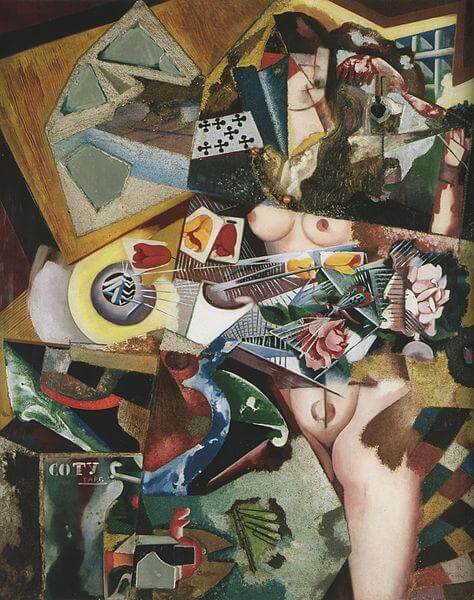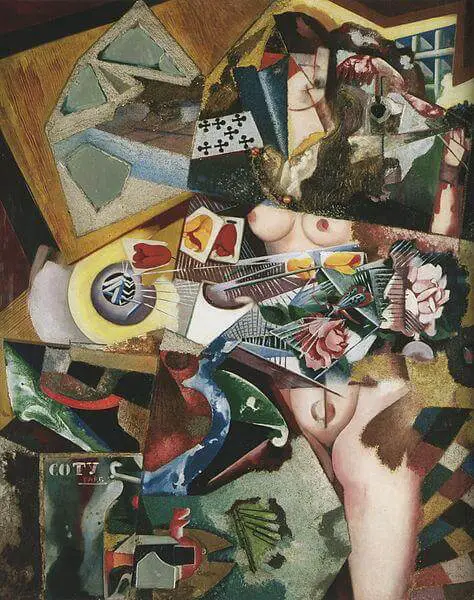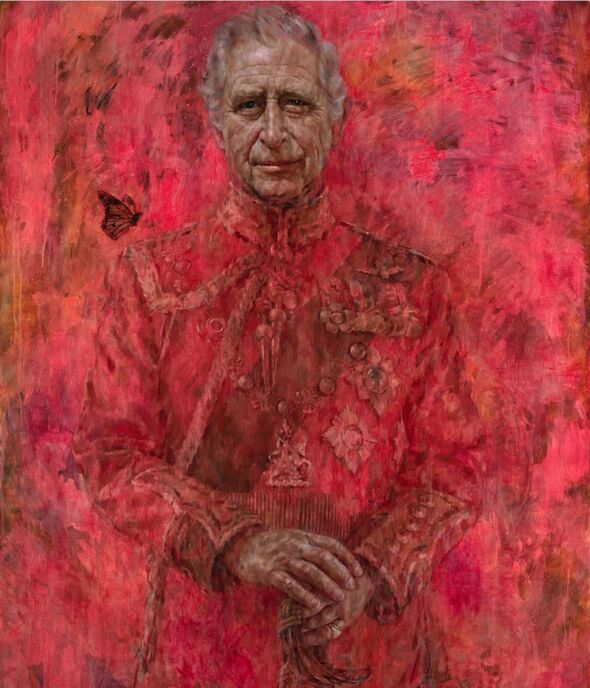Title of Artwork: “Coty”

Artwork by Amadeo de Souza-Cardoso
Year Created 1917
Summary of Coty by Amadeo de Souza-Cardoso
The universe that is most commonly alluded to in Amadeo’s earlier works is not represented by the elements or fragments that are incorporated into this work. Amadeo virtually gives up the Delaunayian discs and the stencilled signs in his work for Coty. In the meantime, he adds flowers to the repertoire of his’still lifes,’ paints a playing card, and replaces the guitar fragments with a fragmented representation of a female nudist. He uses papiers collés in place of glueing the objects, which is an equally valid substitution.
All About Coty by Amadeo de Souza-Cardoso
Additionally, there is a painted surface of a protruding pane of glass at the bottom left-hand corner of the canvas. This is precisely the place where Amadeo paints one of the perfume bottles that he associates with the industrial brand created by Francois Coty.
The canvas is encrusted with several pieces of mirrors, hair clips, and necklace beads. In the dense tangle of planes that intersect in the upper right-hand corner, it is possible to discern both the profile and the hand of a man who is smoking. In addition, this is possible because the tangle is very tight.
A naked woman welcoming a smoking man into her boudoir; perfumes, flowers, clips, necklaces, and mirrors (not to mention the potential metaphor of the spider in its web and the butterfly) all recall, one would say, a classic theme, reminding of the scandalous Olympia and Nana by Manet, or, more closely in time, Picasso’s Les Demoiselles de Avignon.
Amadeo does not stop exploring the reference to concrete experience, and he does not abandon the possibility of telling stories through his painting even though Coty does not follow any illusionistic logic of representation or any sequence of narrative linearity.
The fact that it is primarily pictorial in nature is in no way diminished as a result of this development. On the other hand, starting from the possibilities opened up by Cubism, Coty explores the very limits of painting through the diversification of textures, the superimposition of planes, and, most importantly, the introduction of collage, of these real fragments of a universe of reference which destabilise the painting as a mode of representation.
As a result, Coty begins by reflecting on and (de)constructing the medium of painting. It is without a doubt for this reason that it is frequently appointed as one of the most important works of Amadeo’s later works.






















